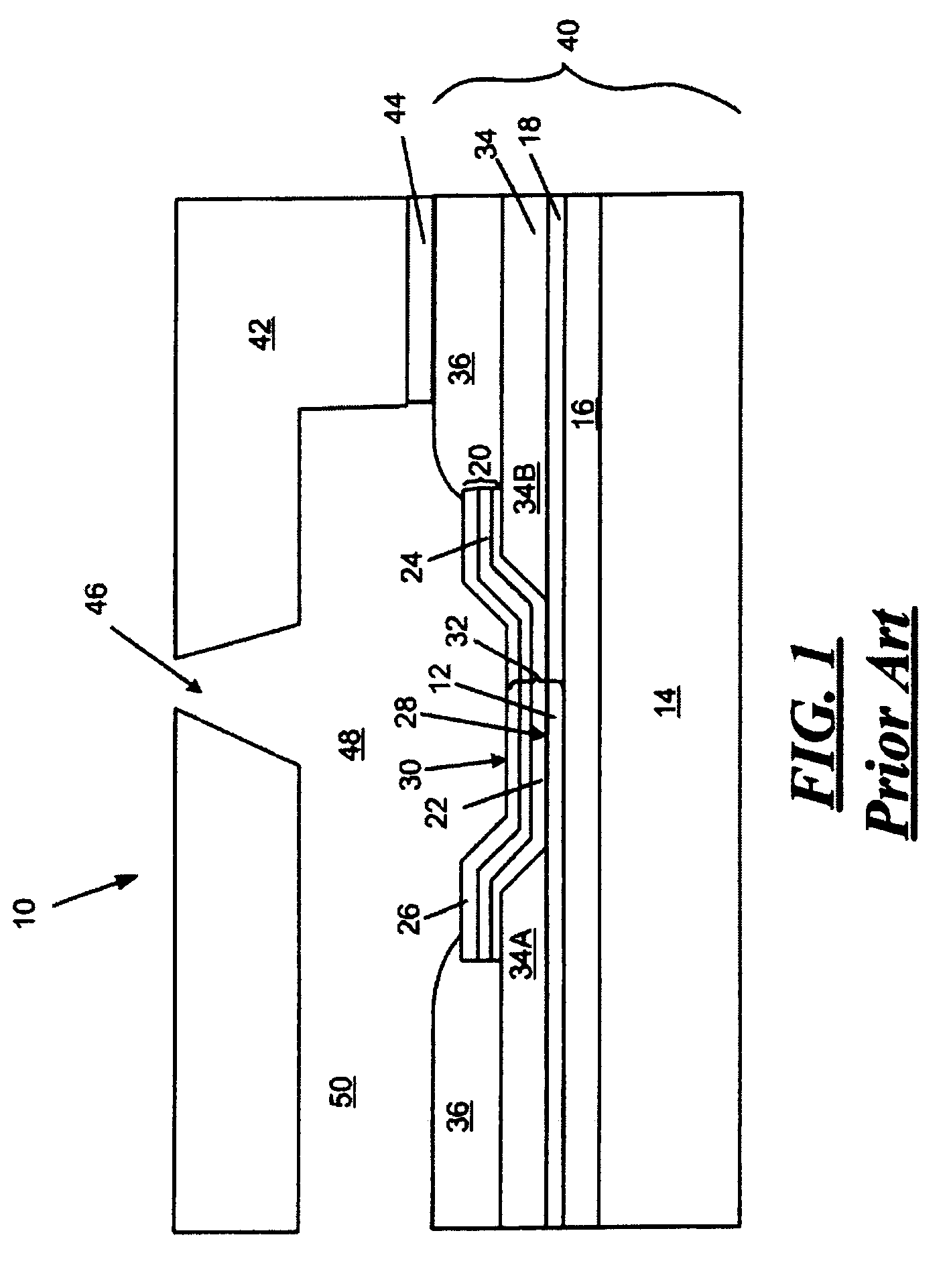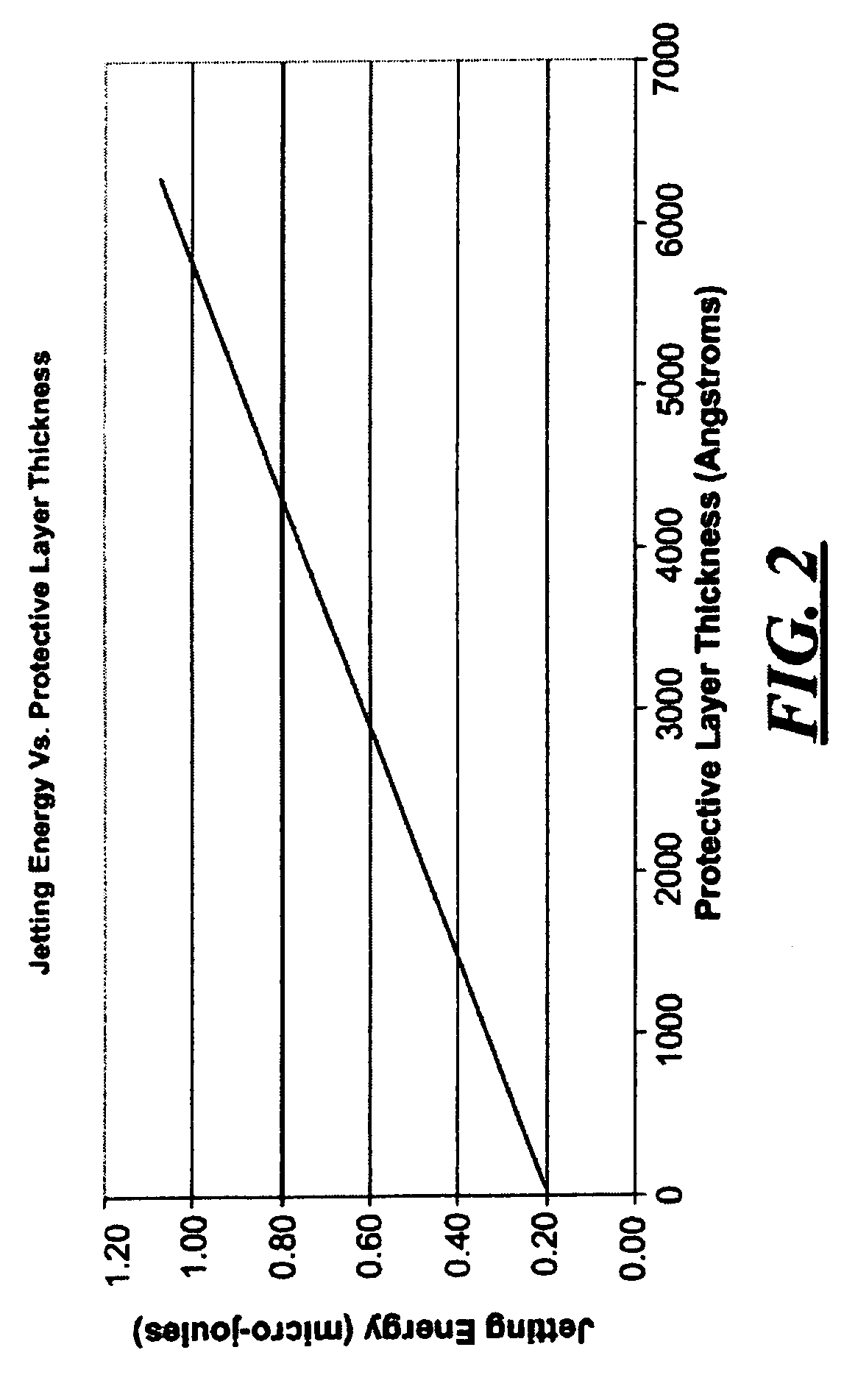Low energy, long life micro-fluid ejection device
a micro-fluid ejection device and long-life technology, applied in printing and other directions, can solve the problems of premature heater failure, heater resistor failure, heater failure, etc., and achieve the effect of substantially enhancing the life of the actuator and not increasing the heater energy
- Summary
- Abstract
- Description
- Claims
- Application Information
AI Technical Summary
Benefits of technology
Problems solved by technology
Method used
Image
Examples
Embodiment Construction
[0022]In accordance with embodiments described herein, micro-fluid ejection heads having improved energy consumption and extended life will now be described.
[0023]For the purposes of this disclosure, the terms “heater stack”, “ejector stack”, and “actuator stack” are intended to refer to an ejection actuator having a combined layer thickness of a resistive material layer and passivation or protection material layer. The passivation or protection material layer is applied to a surface of the resistive material layer to protect the actuator from, for example, chemical or mechanical corrosion or erosion effects of fluids ejected by the micro-fluid ejection device.
[0024]In order to more fully appreciate the benefits of the exemplary embodiments, reference is first made to FIG. 1, which is a cross-sectional view, not to scale, of a portion of a prior art micro-fluid ejection head 10. The cross-sectional view of FIG. 1 shows one of many micro-fluid ejection actuators 12 contained on a mic...
PUM
 Login to View More
Login to View More Abstract
Description
Claims
Application Information
 Login to View More
Login to View More - R&D
- Intellectual Property
- Life Sciences
- Materials
- Tech Scout
- Unparalleled Data Quality
- Higher Quality Content
- 60% Fewer Hallucinations
Browse by: Latest US Patents, China's latest patents, Technical Efficacy Thesaurus, Application Domain, Technology Topic, Popular Technical Reports.
© 2025 PatSnap. All rights reserved.Legal|Privacy policy|Modern Slavery Act Transparency Statement|Sitemap|About US| Contact US: help@patsnap.com



